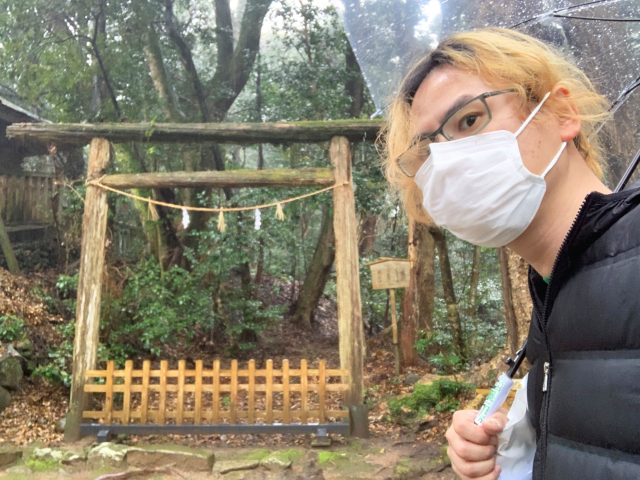
We get to enter a holy land that’s been protected since ancient times, and it reminds us of the world of Princess Mononoke.
Recently, our Japanese-language reporter Seiji Nakazawa has been on a mission to enter as many prohibited areas in Japan as possible. That doesn’t mean he’s illegally entering private property, though, as the forbidden areas that appeal to him are the ones that visitors enter at their own risk, with the possible repercussions being a curse on their souls.
So when he heard about a forbidden forest called Izuru no Mori in Ishikawa Prefecture, he immediately took to the Internet to find out more. That’s when he discovered the forest was actually a sanctuary located behind the main shrine of Keta Grand Shrine, which has a history stretching back more than 2,000 years.
▼ Pilgrimages to the forbidden forest can be booked on official website (seen in the red section below)
Looking closely at the fine print, Seiji found that visitors are required to pay a 3,000 yen (US$27.78) prayer fee in order to enter the forest. Seiji figured this was a bargain, especially when he realised that rather than being cursed, those who enter the forest are said to “receive the blessing of the gods“.
Having entered so many cursed sites in the past, Seiji was in dire need of a blessing, so when he found that tickets can be booked online before your visit, he whipped out his credit card and immediately made a booking.
As he searched around the Internet for more information about the hidden forest, Seiji discovered that the holy area became open to the public for the first time in 400 years on 1 December 2019. While it was only scheduled to be open to the public for one month, the period was extended, with tickets currently available up until 9 May 2021.
Pleased to have found out about the forbidden forest while there was still a chance to see it, Seiji made his way to Ishikawa, and when he arrived, it was pouring with rain, which somehow made the site seem even more mystical.
As he approached the main shrine, he was greeted by a large signboard that read “Forbidden Forest Pilgrimage“, with an arrow guiding visitors to the entrance.
After stopping at the reception desk to show his ticket, Seiji was guided into the hall of worship for a purification ceremony to help cleanse his spirit before entering the virgin forest. The priest began the ceremony by giving thanks at the altar before waving an oonusa (a pole with paper streamers attached to it) over Seiji. The oonusa acts like a purification wand, and as the sound of the shrine drums rang out through the rain, Seiji felt his shoulders becoming lighter and his spirit lifting, as if all the curses he’d accumulated through past visits to forbidden areas were finally leaving his body.
With his spirit now cleansed, Seiji was ready to enter the holy area to receive the blessings of the gods. He was guided to the right-hand side of the Hall of Worship, where he got his first glimpse at the beauty of the natural environment in the area with this scene, which reminded hum of the magical kodama forest spirits from the Ghibli animated film Princess Mononoke.
As he approached the entrance to the forest, he saw a torii gate, which is used to mark the path of the gods. These gates often appear at entrances to shrines in Japan, and once you enter them, the polite etiquette is to walk on the left or right-hand side of the path that follows as you walk up to the shrine, as the centre of the path is said to be reserved for the gods.
The gate pictured above, however, is used to signify that the forest behind it is sacred, and visitors are not allowed to walk through it at all. Instead, visitors are required to enter the forest through a wooden gate at the top of a set of stone steps to the left of the torii.
The forest is so sacred that photography is prohibited past this point, so the photos that follow were kindly provided to us by the shrine’s official photographer. The first thing Seiji noticed when he entered the wooded area, with a shrine priest by his side to guide him, was the fact that the path was covered in nylon, as a countermeasure to prevent shoes from touching the forest soil.
The Forbidden Forest, which is believed to have existed for around 3,500 years, is protected as a National Natural Monument, due to the fact that it’s “a place where you can see the prototype of the Japanese forest“. Therefore, bacteria and non-native species from the soles of visitors’ shoes can run the risk of threatening the delicate forest ecosystem.
Because of this, touching trees in the forest is also not allowed, even if they come close to the path. Seiji saw many of these large trees right beside him as he made his way along the 40-50 metre (131-164 foot) long pathway, and was careful to avoid them as he walked past them.
It was a scenery he never would’ve imagined possible from outside, with the plants and trees living harmoniously, thriving through symbiotic relationships that we humans costantly strive to achieve in our everyday lives.
Seiji could feel the dynamism of life in the whirlpool of trees that surrounded him. According to the shrine priest, the trees here grow branches while competing for sunlight, and as the branches break due to snow and wind, they create new patches of sunlight and new space for other branches to grow, constantly evolving like one living, breathing entity that encapsulates the awesome power of nature.
The forest was truly awe-inspiring in its natural, rugged beauty, and Seiji and the priest stopped midway to worship the area with two bows, two claps, and one bow, in the same way worshippers pay their respects at shrine buildings in Japan.
After they’d paid their respects to the sacred area, the Forbidden Forest pilgrimage was complete, and Seiji was released back out into the concrete jungle. The whole experience, including the purification ceremony, took around 16 minutes, with the forest visit taking about seven minutes.
Though it may have been short, the visit was incredibly impactful, and now that Seiji has received the blessings of the gods, we’ll just have to wait and see if he’s prepared to dance with the devil again, like he did when he entered this cursed tunnel and took his chances with the vengeful spirit of a samurai.
Shrine information
Keta Grand Shrine / 能登國一宮 気多大社
Address: Ishikawa-ken, Hakui-shi, Jikemachi, Ku1-1
石川県羽咋市寺家町ク1-1
Website
Photos ©SoraNews24
Taira no Masakado image: Wikipedia/ロロ~commonswik
● Want to hear about SoraNews24’s latest articles as soon as they’re published? Follow us on Facebook and Twitter!
[ Read in Japanese ]

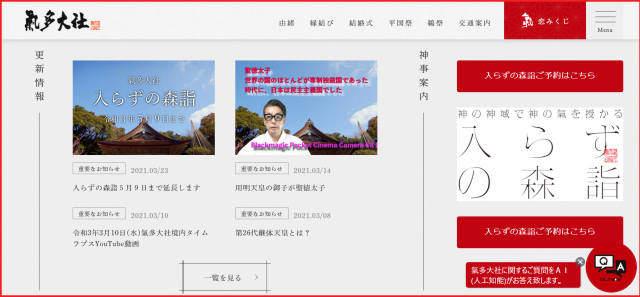
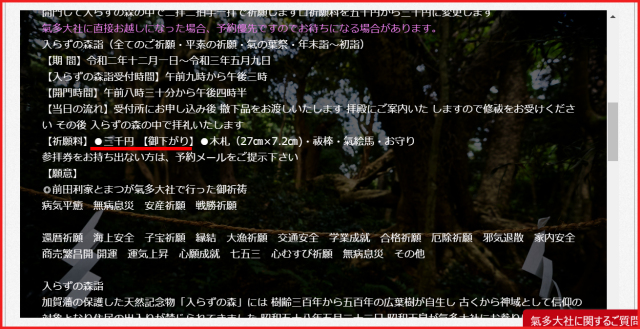
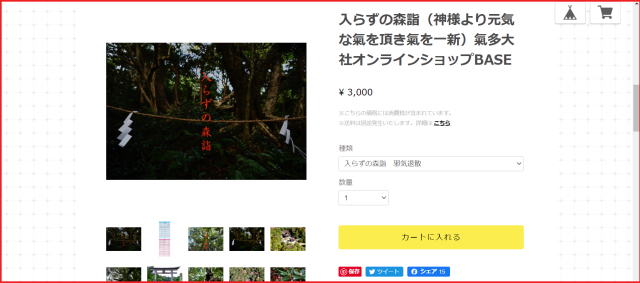
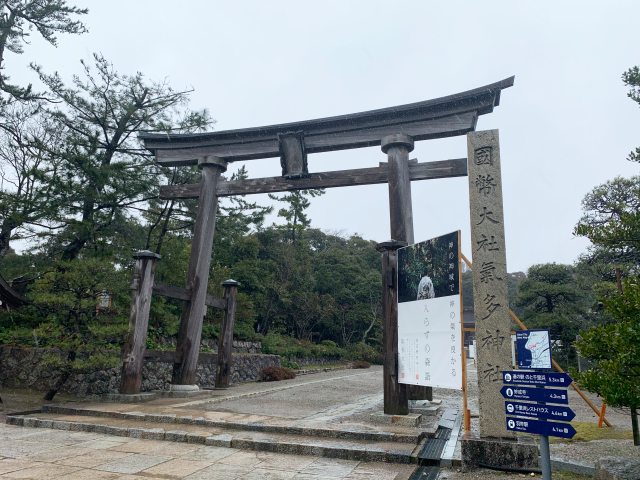
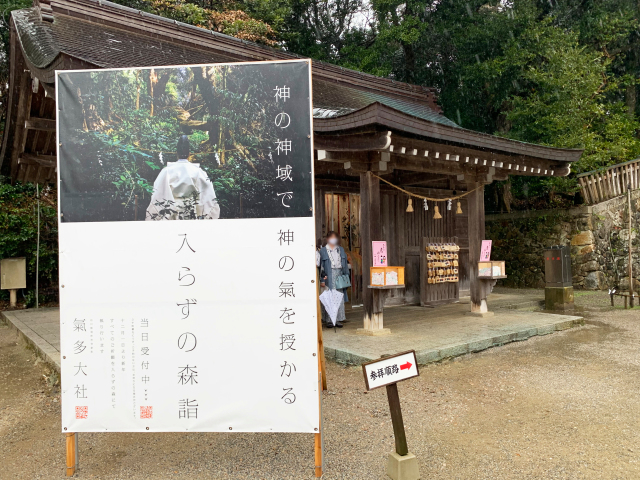
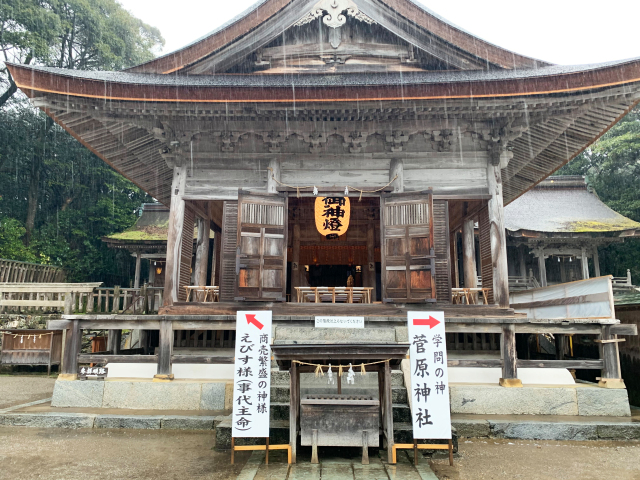
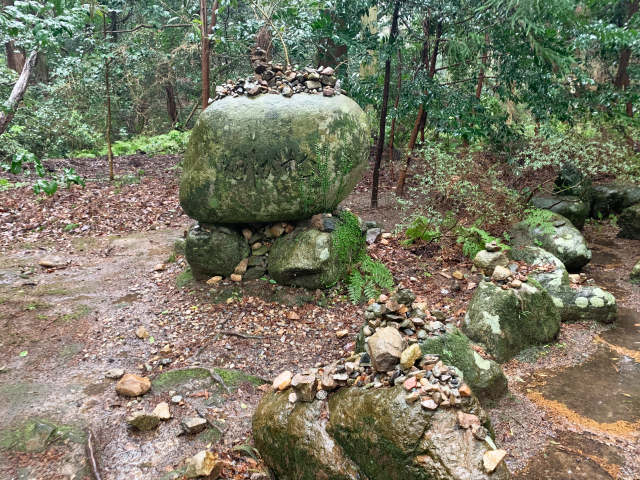
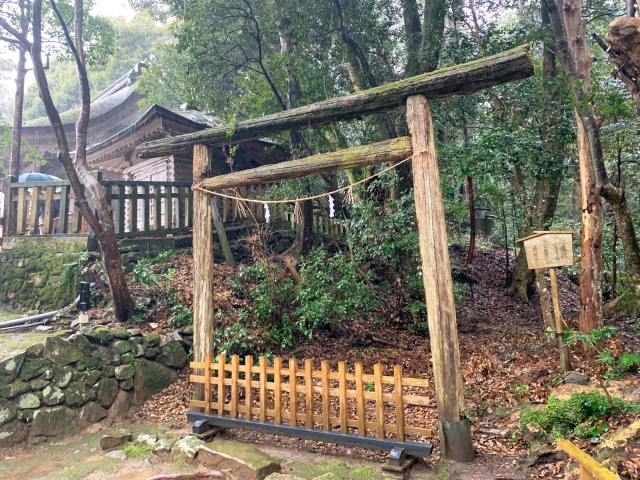
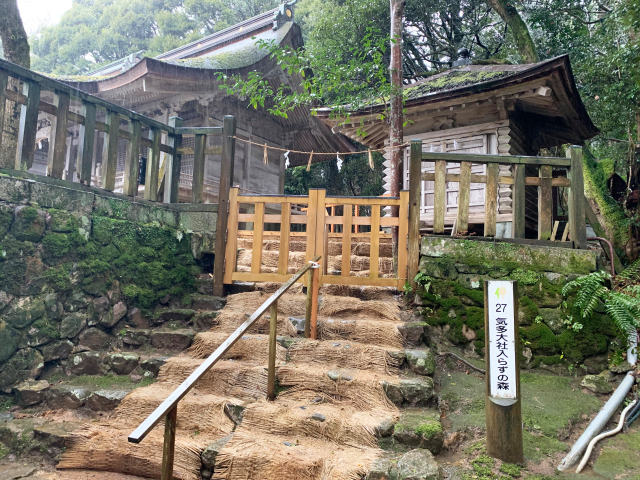
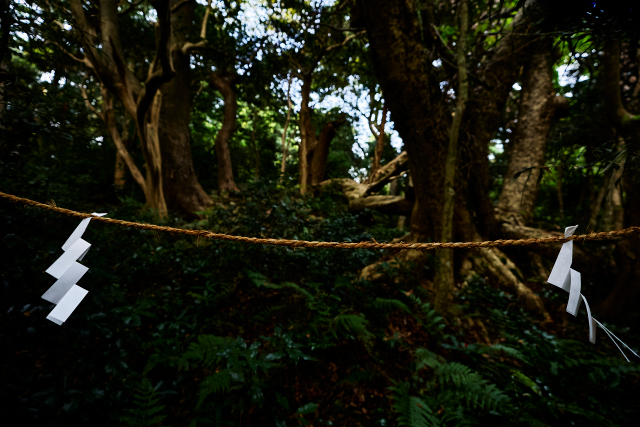
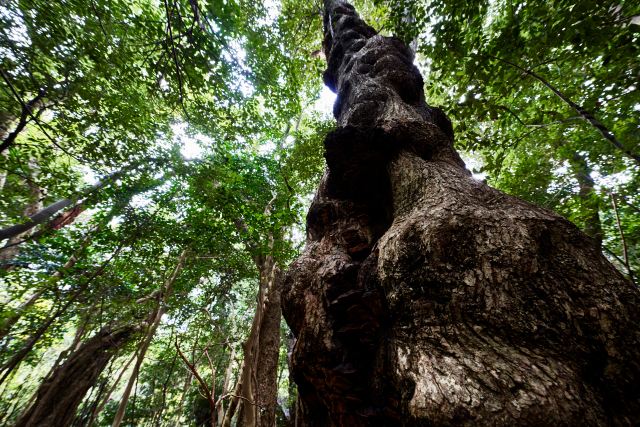
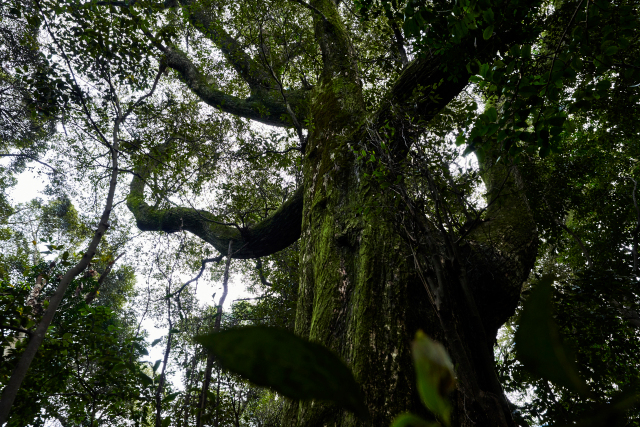
 A visit to Japan’s forbidden forest of Yawata no Yabushirazu
A visit to Japan’s forbidden forest of Yawata no Yabushirazu Shiratani Unsuikyo: The breathtaking anime setting where Princess Mononoke was born
Shiratani Unsuikyo: The breathtaking anime setting where Princess Mononoke was born TripAdvisor Japan announces the country’s 10 favorite shrines and temples
TripAdvisor Japan announces the country’s 10 favorite shrines and temples Arashiyama bamboo forest in Kyoto “crying” as tourists vandalise trees
Arashiyama bamboo forest in Kyoto “crying” as tourists vandalise trees Japanese Twitter user posts beautiful photos of what may be Japan’s most picturesque shrine
Japanese Twitter user posts beautiful photos of what may be Japan’s most picturesque shrine McDonald’s new Happy Meals offer up cute and practical Sanrio lifestyle goods
McDonald’s new Happy Meals offer up cute and practical Sanrio lifestyle goods All-you-can-drink Starbucks and amazing views part of Tokyo’s new 170 meter-high sky lounge
All-you-can-drink Starbucks and amazing views part of Tokyo’s new 170 meter-high sky lounge Studio Ghibli glasses cases let anime characters keep an eye on your spectacles
Studio Ghibli glasses cases let anime characters keep an eye on your spectacles McDonald’s Japan releases a pancake pie for new retro kissaten coffeeshop series
McDonald’s Japan releases a pancake pie for new retro kissaten coffeeshop series Starbucks reopens at Shibuya Scramble Crossing with new look and design concept
Starbucks reopens at Shibuya Scramble Crossing with new look and design concept The oldest tunnel in Japan is believed to be haunted, and strange things happen when we go there
The oldest tunnel in Japan is believed to be haunted, and strange things happen when we go there Super Nintendo World expansion gets delayed for several months at Universal Studios Japan
Super Nintendo World expansion gets delayed for several months at Universal Studios Japan We try out “Chan Ramen”, an underground type of ramen popular in the ramen community
We try out “Chan Ramen”, an underground type of ramen popular in the ramen community Beautiful Sailor Moon manhole cover coasters being given out for free by Tokyo tourist center
Beautiful Sailor Moon manhole cover coasters being given out for free by Tokyo tourist center More foreign tourists than ever before in history visited Japan last month
More foreign tourists than ever before in history visited Japan last month Disney princesses get official manga makeovers for Manga Princess Cafe opening in Tokyo
Disney princesses get official manga makeovers for Manga Princess Cafe opening in Tokyo Beautiful new Final Fantasy T-shirt collection on the way from Uniqlo【Photos】
Beautiful new Final Fantasy T-shirt collection on the way from Uniqlo【Photos】 Is the new Shinkansen Train Desk ticket worth it?
Is the new Shinkansen Train Desk ticket worth it? Foreign English teachers in Japan pick their favorite Japanese-language phrases【Survey】
Foreign English teachers in Japan pick their favorite Japanese-language phrases【Survey】 Japanese convenience store packs a whole bento into an onigiri rice ball
Japanese convenience store packs a whole bento into an onigiri rice ball Studio Ghibli releases Kiki’s Delivery Service chocolate cake pouches in Japan
Studio Ghibli releases Kiki’s Delivery Service chocolate cake pouches in Japan Japan’s bone-breaking and record-breaking roller coaster is permanently shutting down
Japan’s bone-breaking and record-breaking roller coaster is permanently shutting down New definition of “Japanese whiskey” goes into effect to prevent fakes from fooling overseas buyers
New definition of “Japanese whiskey” goes into effect to prevent fakes from fooling overseas buyers Our Japanese reporter visits Costco in the U.S., finds super American and very Japanese things
Our Japanese reporter visits Costco in the U.S., finds super American and very Japanese things Studio Ghibli unveils Mother’s Day gift set that captures the love in My Neighbour Totoro
Studio Ghibli unveils Mother’s Day gift set that captures the love in My Neighbour Totoro Foreign passenger shoves conductor on one of the last full runs for Japan’s Thunderbird train
Foreign passenger shoves conductor on one of the last full runs for Japan’s Thunderbird train Domino’s Japan now sells…pizza ears?
Domino’s Japan now sells…pizza ears? New Japanese KitKat flavour stars Sanrio characters, including Hello Kitty
New Japanese KitKat flavour stars Sanrio characters, including Hello Kitty Kyoto creates new for-tourist buses to address overtourism with higher prices, faster rides
Kyoto creates new for-tourist buses to address overtourism with higher prices, faster rides Sales of Japan’s most convenient train ticket/shopping payment cards suspended indefinitely
Sales of Japan’s most convenient train ticket/shopping payment cards suspended indefinitely Sold-out Studio Ghibli desktop humidifiers are back so Totoro can help you through the dry season
Sold-out Studio Ghibli desktop humidifiers are back so Totoro can help you through the dry season Japanese government to make first change to romanization spelling rules since the 1950s
Japanese government to make first change to romanization spelling rules since the 1950s Ghibli founders Toshio Suzuki and Hayao Miyazaki contribute to Japanese whisky Totoro label design
Ghibli founders Toshio Suzuki and Hayao Miyazaki contribute to Japanese whisky Totoro label design Doraemon found buried at sea as scene from 1993 anime becomes real life【Photos】
Doraemon found buried at sea as scene from 1993 anime becomes real life【Photos】 Tokyo’s most famous Starbucks is closed
Tokyo’s most famous Starbucks is closed One Piece characters’ nationalities revealed, but fans have mixed opinions
One Piece characters’ nationalities revealed, but fans have mixed opinions We asked a Uniqlo employee what four things we should buy and their suggestions didn’t disappoint
We asked a Uniqlo employee what four things we should buy and their suggestions didn’t disappoint Princesses, fruits, and blacksmiths: Study reveals the 30 most unusual family names in Japan
Princesses, fruits, and blacksmiths: Study reveals the 30 most unusual family names in Japan Beautiful forest in southern Japan will spirit you away to another world
Beautiful forest in southern Japan will spirit you away to another world Japanese voodoo dolls with foreign politician photo keep getting nailed to town’s shrine trees
Japanese voodoo dolls with foreign politician photo keep getting nailed to town’s shrine trees Don’t let the rain get you down! Here are Japan’s top 10 most beautiful rainy day travel spots
Don’t let the rain get you down! Here are Japan’s top 10 most beautiful rainy day travel spots Akihabara’s otaku shrine celebrates PlayStation 5 launch with ethereal one-night event
Akihabara’s otaku shrine celebrates PlayStation 5 launch with ethereal one-night event Ghibli Park unveils new real-life Howl’s Moving Castle!
Ghibli Park unveils new real-life Howl’s Moving Castle! A Gintama fan’s emotional 19-year journey to buy a proper Lake Toya bokuto wooden katana【Pics】
A Gintama fan’s emotional 19-year journey to buy a proper Lake Toya bokuto wooden katana【Pics】 Huge torii gate found in the middle of a busy Kumamoto intersection
Huge torii gate found in the middle of a busy Kumamoto intersection Resol Poshtel: Cheap capsule hotel in Tokyo is a hit with overseas visitors, and we find out why
Resol Poshtel: Cheap capsule hotel in Tokyo is a hit with overseas visitors, and we find out why Non-Whisper of the Heart Seiji’s 60x-zoom sneak peek of the real-world Earth Shop at Ghibli Park
Non-Whisper of the Heart Seiji’s 60x-zoom sneak peek of the real-world Earth Shop at Ghibli Park The only path to this Nagasaki Shinto shrine gets swallowed by the sea every day【Video】
The only path to this Nagasaki Shinto shrine gets swallowed by the sea every day【Video】 Supermarket sushi becomes a hot topic with foreigners on Reddit, but is it any good?
Supermarket sushi becomes a hot topic with foreigners on Reddit, but is it any good? Spring walking event provides guided tour around Totoro forest loved by Hayao Miyazaki
Spring walking event provides guided tour around Totoro forest loved by Hayao Miyazaki Japanese restaurant chain causes a stir with foreigners online, but is it any good?
Japanese restaurant chain causes a stir with foreigners online, but is it any good? Princess Mononoke’s Great Forest Spirit figure adds solemn Ghibli style to any home【Photos】
Princess Mononoke’s Great Forest Spirit figure adds solemn Ghibli style to any home【Photos】 Our visit to the coolest Book Off used Japanese book store that we’ve ever seen
Our visit to the coolest Book Off used Japanese book store that we’ve ever seen Ghibli moss art discovered along mountain road in Japan
Ghibli moss art discovered along mountain road in Japan
Leave a Reply